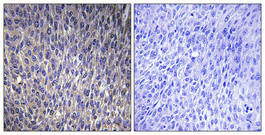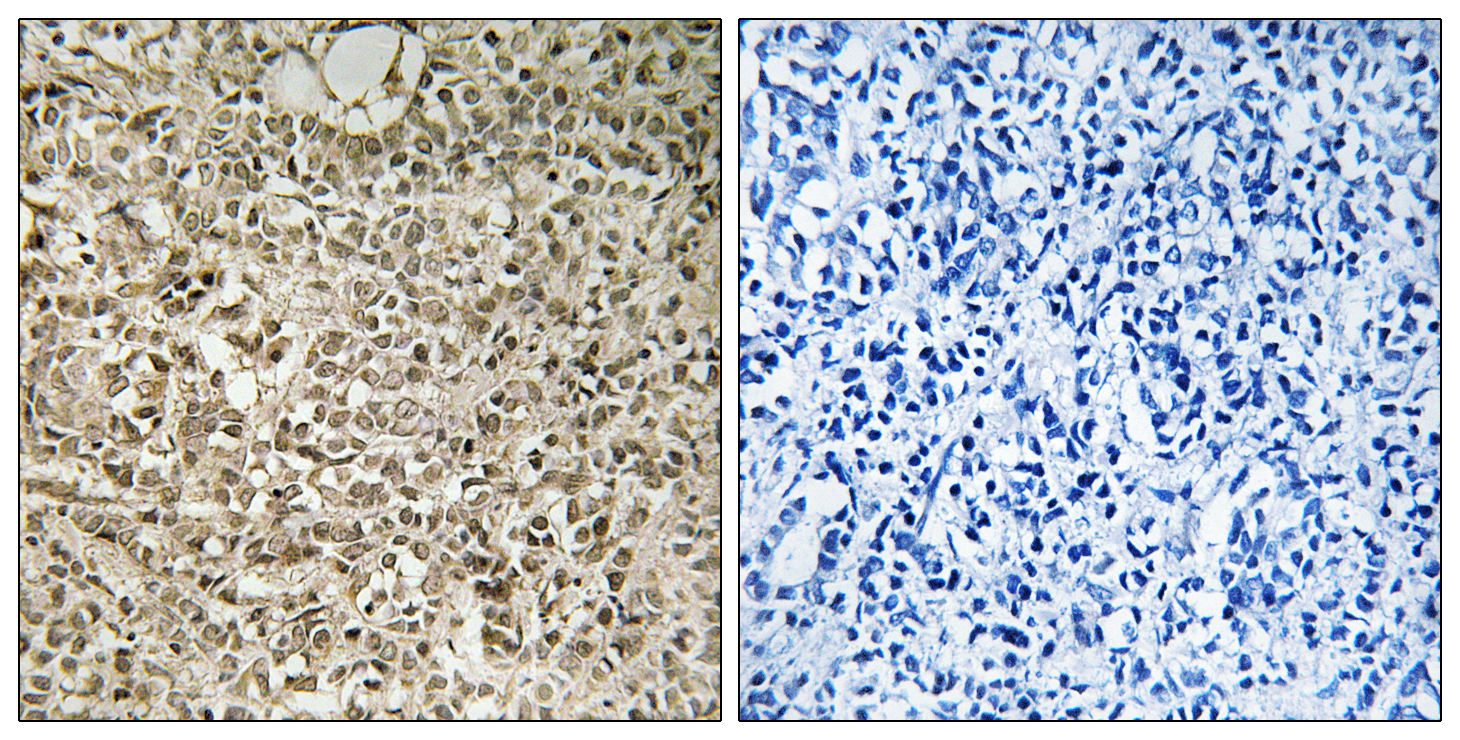Ribosomal Protein L40 Polyclonal Antibody
- Catalog No.:YT4116
- Applications:IHC;IF;ELISA
- Reactivity:Human;Mouse;Rat
- Target:
- Ribosomal Protein L40
- Fields:
- >>Ribosome;>>Ubiquitin mediated proteolysis;>>Mitophagy - animal;>>Parkinson disease;>>Pathways of neurodegeneration - multiple diseases;>>Shigellosis;>>Kaposi sarcoma-associated herpesvirus infection;>>Coronavirus disease - COVID-19
- Gene Name:
- UBA52
- Protein Name:
- Ubiquitin-60S ribosomal protein L40
- Human Gene Id:
- 7311
- Human Swiss Prot No:
- P62987
- Mouse Gene Id:
- 22186
- Mouse Swiss Prot No:
- P62984
- Rat Gene Id:
- 64156
- Rat Swiss Prot No:
- P62986
- Immunogen:
- The antiserum was produced against synthesized peptide derived from human RPL40. AA range:71-120
- Specificity:
- Ribosomal Protein L40 Polyclonal Antibody detects endogenous levels of Ribosomal Protein L40 protein.
- Formulation:
- Liquid in PBS containing 50% glycerol, 0.5% BSA and 0.02% sodium azide.
- Source:
- Polyclonal, Rabbit,IgG
- Dilution:
- IHC 1:100 - 1:300. ELISA: 1:40000.. IF 1:50-200
- Purification:
- The antibody was affinity-purified from rabbit antiserum by affinity-chromatography using epitope-specific immunogen.
- Concentration:
- 1 mg/ml
- Storage Stability:
- -15°C to -25°C/1 year(Do not lower than -25°C)
- Other Name:
- UBA52;UBCEP2;Ubiquitin-60S ribosomal protein L40;CEP52;Ubiquitin A-52 residue ribosomal protein fusion product 1
- Molecular Weight(Da):
- 6kD
- Background:
- Ubiquitin is a highly conserved nuclear and cytoplasmic protein that has a major role in targeting cellular proteins for degradation by the 26S proteosome. It is also involved in the maintenance of chromatin structure, the regulation of gene expression, and the stress response. Ubiquitin is synthesized as a precursor protein consisting of either polyubiquitin chains or a single ubiquitin moiety fused to an unrelated protein. This gene encodes a fusion protein consisting of ubiquitin at the N terminus and ribosomal protein L40 at the C terminus, a C-terminal extension protein (CEP). Multiple processed pseudogenes derived from this gene are present in the genome. [provided by RefSeq, Jul 2008],
- Function:
- function:Protein modifier which can be covalently attached to target lysines either as a monomer or as a lysine-linked polymer. Attachment to proteins as a Lys-48-linked polymer usually leads to their degradation by proteasome. Attachment to proteins as a monomer or as an alternatively linked polymer does not lead to proteasomal degradation and may be required for numerous functions, including maintenance of chromatin structure, regulation of gene expression, stress response, ribosome biogenesis and DNA repair.,miscellaneous:This ribosomal protein is synthesized as a C-terminal extension protein (CEP) of ubiquitin.,miscellaneous:Ubiquitin is synthesized as a polyubiquitin precursor with exact head to tail repeats, the number of repeats differ between species and strains. In some species there is a final amino-acid after the last repeat, here in human a Val. Some ubiquitin genes contain a
- Subcellular Location:
- [Ubiquitin]: Cytoplasm . Nucleus .; [60S ribosomal protein L40]: Cytoplasm .
- Expression:
- Brain,Epithelium,Fetal brain cortex,Liver,L
- June 19-2018
- WESTERN IMMUNOBLOTTING PROTOCOL
- June 19-2018
- IMMUNOHISTOCHEMISTRY-PARAFFIN PROTOCOL
- June 19-2018
- IMMUNOFLUORESCENCE PROTOCOL
- September 08-2020
- FLOW-CYTOMEYRT-PROTOCOL
- May 20-2022
- Cell-Based ELISA│解您多样本WB检测之困扰
- July 13-2018
- CELL-BASED-ELISA-PROTOCOL-FOR-ACETYL-PROTEIN
- July 13-2018
- CELL-BASED-ELISA-PROTOCOL-FOR-PHOSPHO-PROTEIN
- July 13-2018
- Antibody-FAQs
- Products Images

- Immunohistochemical analysis of paraffin-embedded Human lung cancer. Antibody was diluted at 1:100(4° overnight). High-pressure and temperature Tris-EDTA,pH8.0 was used for antigen retrieval. Negetive contrl (right) obtaned from antibody was pre-absorbed by immunogen peptide.

- Immunohistochemistry analysis of paraffin-embedded human breast carcinoma tissue, using RPL40 Antibody. The picture on the right is blocked with the synthesized peptide.



